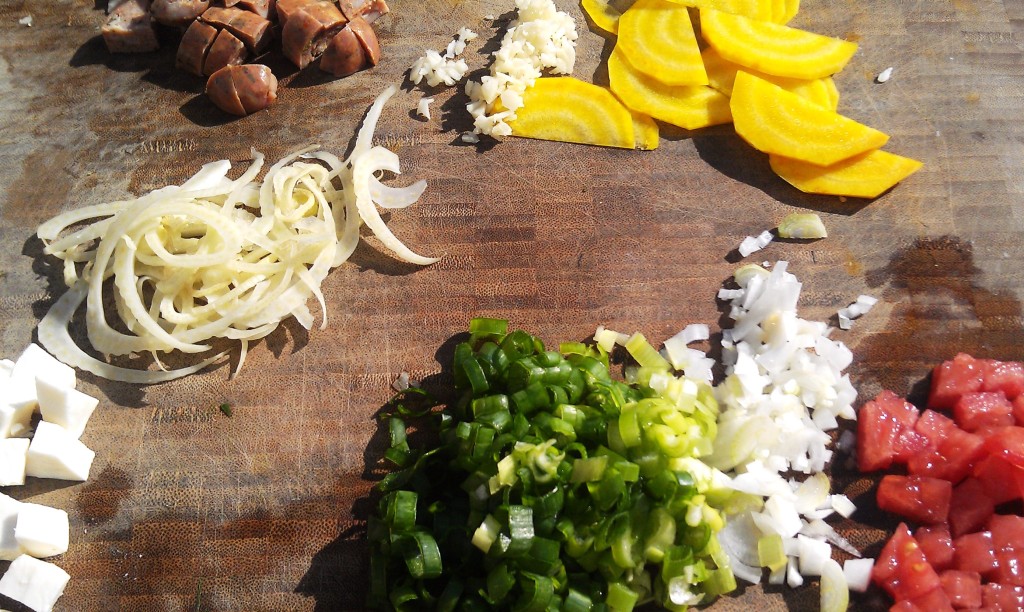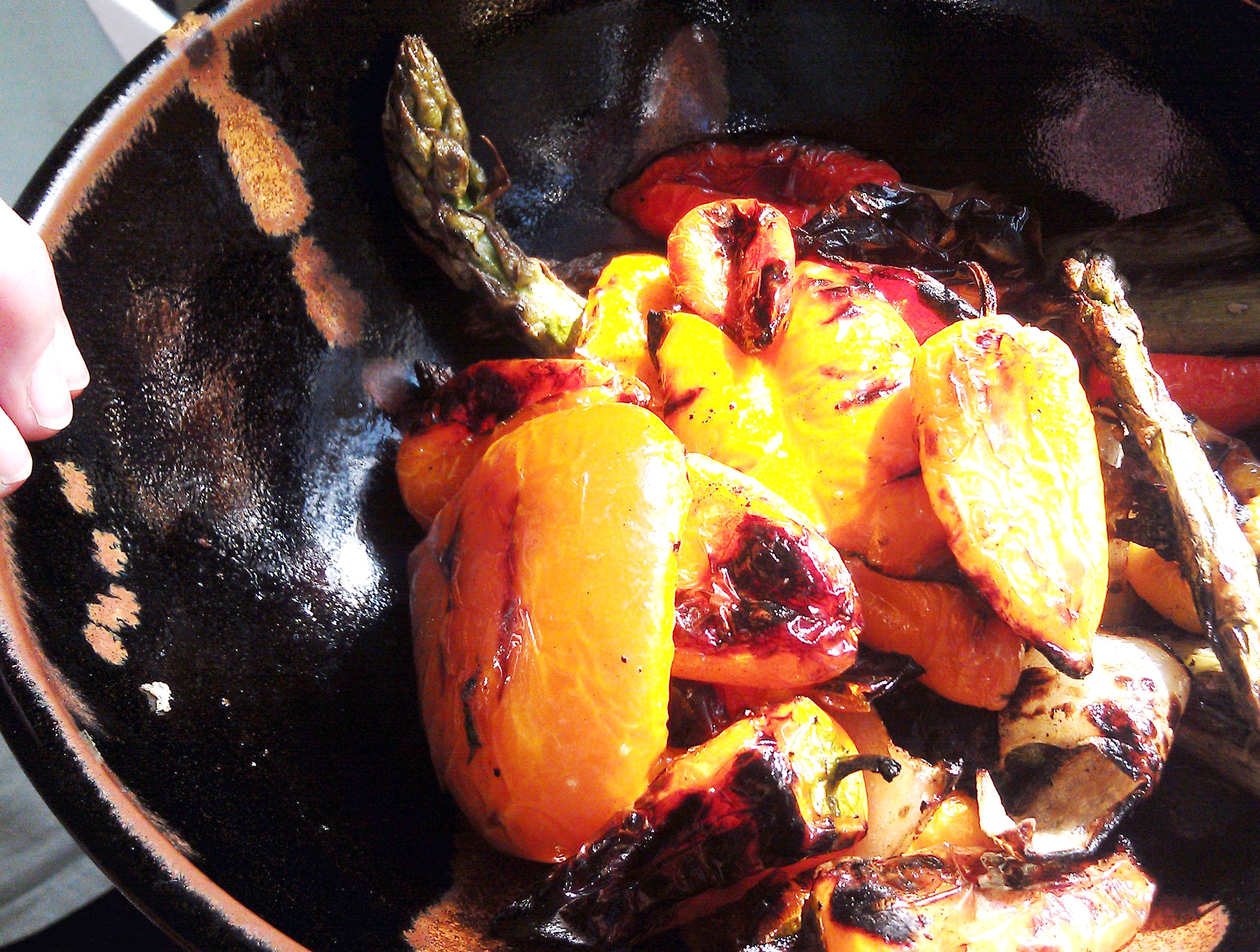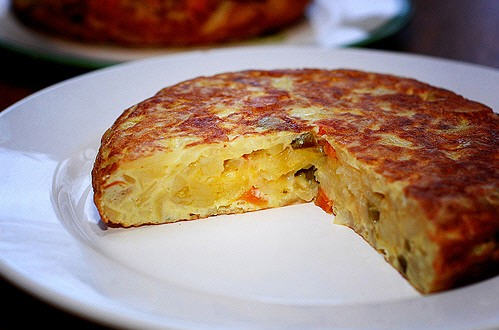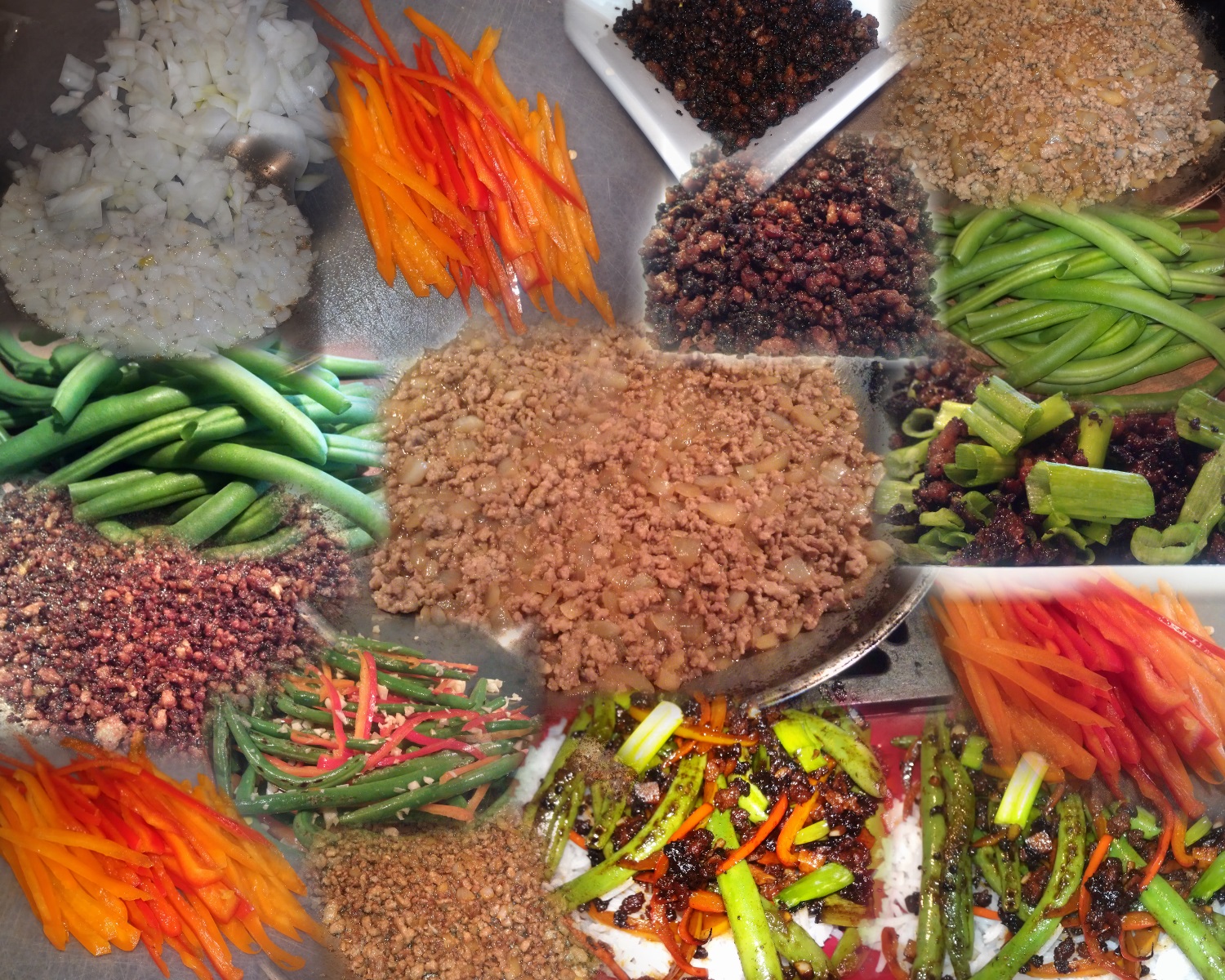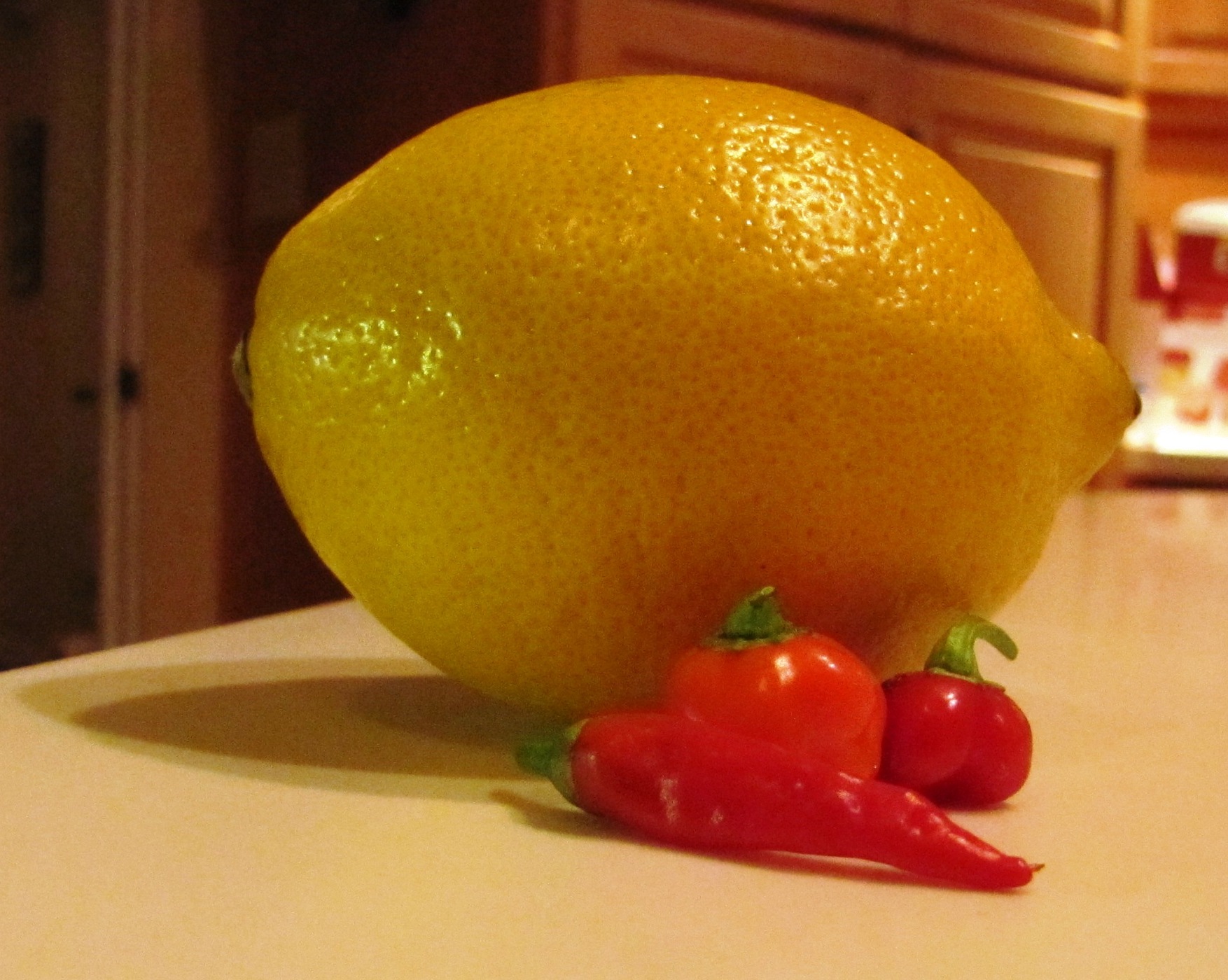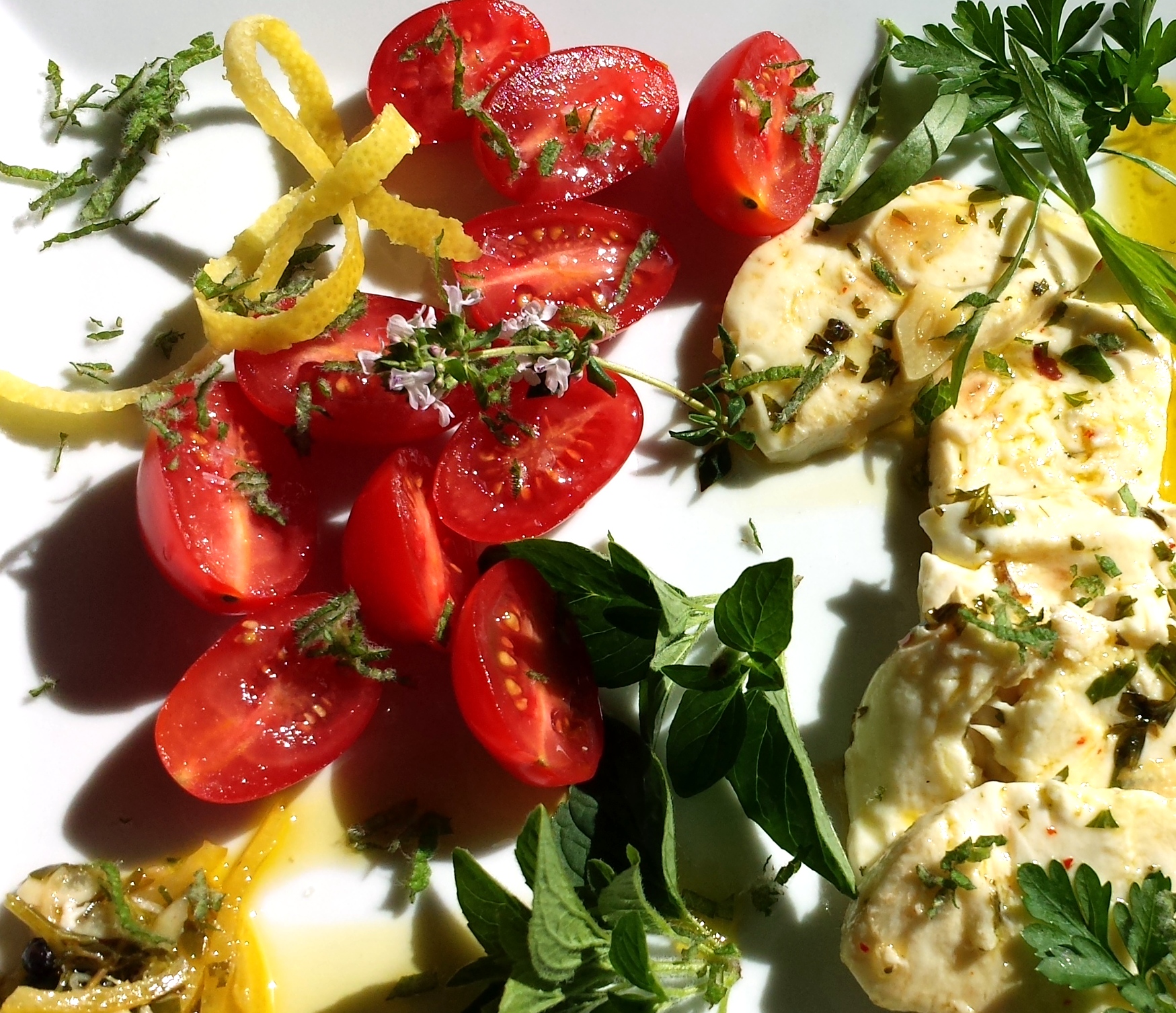Last year, we spent a few days in Portland and stopped by Navarre for a bite of breakfast. Navarre is a Spanish style cafe with Basque influences. In my admittedly limited experience it’s one of the best restaurants of its kind – or any kind – in Portland.
In the morning, Navarre does omelets, but they aren’t really omelets – they’re called scrambles. A scramble, apparently, is an omelet that is shaken, rather than stirred – an omelet that does not fold neatly over a tidy packet of whatever-you’re-using-as-filling, but whose fillings are precisely chopped and dropped into the pan with the eggs, then folded about, hither and yon, ultimately forming a lovely, cohesive whole.
After leaving Navarre, I vowed to recreate their techniques for preparing this seemingly simple, yet beautiful and delicious dish. I think I’m making progress. Here are a few ideas, a recipe and some photos to show you where I’m now at with this dish.
By the way, scrambles like this make wonderful Breakfast for Dinner meals!
Idea One – Go Seasonal
OK, this is just generally a good idea for most cooking. It’s August in the Salish Sea area where I live and that means that everything is producing in abundance. So, for today’s scramble, I used local eggs from our neighbor Ginny, fresh fennel root, golden beets, beautiful fresh green onions, local garlic, and fresh mozza cheese – all from local purveyors. The proof was in the pudding. Omelet. Scramble!! You know what I mean!!
Idea Two – Cut to the Right Size
Again, this is an idea that’s smart in almost any dish. For example, golden beets are amongst the freshest and sweetest of beet, yet still they are fibrous and need a bit of cooking to take on the whole of their succulent goodness. Solution – cut them into a thick sort of chiffonade – very thin pieces about 3/16″ wide. They’re so small they heat through and even cook a bit in a flash, lending beety flavor to the omelet without overpowering it. See directions on cutting different filling items below in the recipe for more information.
Idea Three – Add to the Pan in a Reasonable Order
Onion takes a little longer to cook. Beet slivers – even the chiffonade-like beet slivers you’ll cut for this scramble – can take even longer. The idea is to add your slower-cooking fillings to the pan and let them cook up a bit before you pour in the beaten eggs. Not such a big thing, but I’m always surprised at what a difference this kind of timing can make in the outcome of your dish.
OK, so those are my current bright ideas – and I would love to hear yours! – here’s the recipe – which you can see as a jumping-off point for your own creations!
Ingredients (for a scramble that feeds two)
- 4 fresh eggs, lightly beaten with 2 tsp. water or dry sherry
- 1 medium tomato, trimmed and seeded, cut into 3/8″ pieces (medium dice), sprinkled lightly with sea salt
- 2 healthy stalks green onion, trimmed and sliced into 3/16″ pieces. Or so. Roughly. Thereabouts!
- 2 cloves of the freshest garlic you’ve got, minced
- 2 oz. fennel root, cut into a thick sort of chiffonade (see picture) (a piece just a bit larger than a ping-pong ball)
- 1 oz. golden beet, cut into a thick sort of chiffonade (see picture) (a piece about the size of a ping-pong ball)
- 1/2 piece sweet Italian sausage. I used Aidell’s pre-cooked, because I was lazy and Aidell’s is pretty good! If you use a sausage that requires cooking, cook as you normally do, then cut into medium dice for the scramble.
- 2-3 oz. cheese. I used fresh mozza cheese from a local purveyor, cut into approx. medium dice
- Olive oil and / or butter for saute – I use a mix of both
- Salt and pepper to taste
Method
Heat a 10″ – or thereabouts – frying pan over medium heat until it’s hot. Add a turn of olive oil and a small knob of butter. Swirl until the butter stops foaming.
Add the cut up beet and fennel root and saute for 2 minutes, reducing heat if necessary to prevent any burning.
Add the garlic and the sausage, saute for another 2 minutes, until the sausage is warmed through and the garlic is quite fragrant.
Add 3/4 of the green onion and saute for another 30 seconds, then pour in the lightly beaten egg mixture. Here’s the trick.
Using a spatula, keep pushing the eggs around and turning them until little cooked “curds” begin to form. When this happens, add the cheese and tomato and keep pushing and turning the egg until it’s cooked the way you like it. Typically a scramble will be a little firmer than plain scrambled eggs, but whatever you like Is The Rule!!
Serve on warmed plates, sprinkled with the remaining bits of sliced green onion. Toast is good.
I am very interested in hearing about any unusual ingredients you may think to use in your own scrambles!



